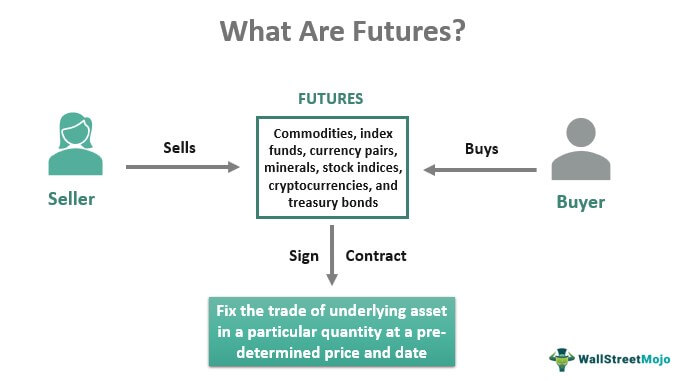Futures are financial contracts that obligate the buyer to purchase an asset (or the seller to sell an asset) at a predetermined future date and price. They are standardized contracts traded on organized exchanges, such as the Chicago Mercantile Exchange (CME) or the Intercontinental Exchange (ICE), where buyers and sellers come together to trade these contracts.
Here’s a detailed breakdown of futures in investing:
Contract Specifications: Futures contracts specify the quantity and quality of the underlying asset being traded. For example, a futures contract for crude oil may specify delivery of 1,000 barrels of West Texas Intermediate (WTI) crude oil of a certain grade and quality. Each futures contract also has a standardized expiration date and delivery month.
Margin Requirements: Futures trading involves posting an initial margin deposit with the exchange, which acts as collateral for the contract. The margin requirement is typically a fraction of the contract’s total value, allowing traders to control a larger position with a relatively small amount of capital. However, traders must maintain a minimum level of margin, known as the maintenance margin, to cover potential losses.
Leverage: Futures trading offers significant leverage, meaning traders can control a large position with a relatively small amount of capital. This leverage amplifies both potential profits and losses, making futures trading inherently risky. Traders can profit from small price movements in the underlying asset, but they can also incur substantial losses if the market moves against their position.
Price Discovery: Futures markets play a crucial role in price discovery, as they provide a transparent and efficient platform for buyers and sellers to establish prices for various commodities, financial instruments, and other assets. The prices of futures contracts are determined by supply and demand dynamics, as well as fundamental factors such as supply and demand fundamentals, geopolitical events, and economic indicators.
Hedging: One of the primary purposes of futures contracts is to hedge against price risk. Hedgers, such as farmers, producers, and manufacturers, use futures contracts to lock in prices for their products or inputs, thereby protecting themselves against adverse price movements. For example, a farmer may sell futures contracts for corn to hedge against the risk of falling corn prices at harvest time.
Speculation: Speculators, including individual traders, hedge funds, and institutional investors, participate in futures markets to profit from anticipated price movements. Speculators take positions in futures contracts based on their analysis of market trends, technical indicators, and other factors. They aim to buy low and sell high or sell high and buy low, depending on whether they expect prices to rise or fall.
Arbitrage: Arbitrageurs exploit price discrepancies between related markets or assets to earn risk-free profits. They buy undervalued assets in one market and simultaneously sell them at a higher price in another market, profiting from the price differential. Futures arbitrageurs may take advantage of pricing inefficiencies between futures contracts and their underlying assets or between different futures contracts with similar underlying assets.
Role in Investment Portfolios: Futures can serve as a diversification tool in investment portfolios, offering exposure to a wide range of asset classes, including commodities, currencies, interest rates, and equity indices. Institutional investors and portfolio managers use futures to manage risk, enhance returns, and adjust portfolio allocations based on their investment objectives and market outlook.
Regulation: Futures markets are regulated by government agencies, such as the Commodity Futures Trading Commission (CFTC) in the United States, to ensure fair and orderly trading, market integrity, and investor protection. Regulatory oversight includes monitoring trading activity, enforcing compliance with exchange rules and regulations, and investigating fraudulent or manipulative practices.
Market Liquidity and Volatility: Futures markets are characterized by high liquidity, meaning there are typically enough buyers and sellers to facilitate smooth and efficient trading. However, futures prices can be volatile, especially in response to unexpected events, geopolitical tensions, or changes in supply and demand fundamentals. Traders should be aware of the risks associated with trading futures and use risk management strategies to mitigate potential losses.
Overall, futures play a vital role in global financial markets, providing a mechanism for price discovery, risk management, and investment opportunities across a wide range of asset classes. However, futures trading involves inherent risks and complexities, and investors should carefully consider their investment objectives, risk tolerance, and familiarity with futures markets before participating in trading activities.

